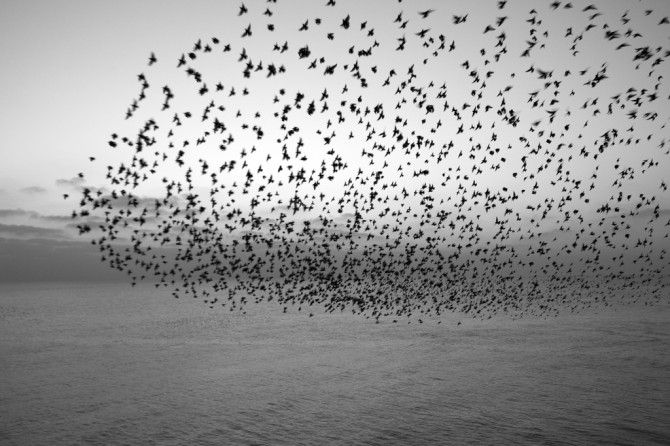Resonance as an emergent property

For years, I have used the image of starlings to describe the self-organization and emergence of harmonics (overtones) in singing. When the vocal mechanism is free and functioning optimally, the quality of resonance is emergent- meaning if you cultivate the conditions of well-coordinated phonation, all of the desirable overtones in the harmonic spectrum self-organize and appear spontaneously.
The way I work with this is to help someone cooperate with the receptive, responsive design of the vocal mechanism. I ask that any strategy employed to boost particular partials be temporarily left aside,(“brightening”, “darkening” or any other aesthetic preferences) and that instead the emphasis be placed on flexibility and porosity- a permeable quality that includes peripheral listening and omni-sensing.
The results are usually almost instantaneous- the sound becomes more dimensionally resonant, conspicuously lacking in force or harmonic imbalance. What is left is supreme maneuverability and the sense that one is controlling the quality of movement and sound with intention. By appropriately coordinating the vocal mechanism, one can quite easily call up different colors and emphasize specific spectral resonance without diminishing the others.
“Self-organization can be observed not only in cells and multicellular organisms but also in animal societies. In this beautiful short video (4 min) you see thousands of starlings flying in tight flocks known as “murmurations.” When you watch these dazzling clouds of birds — swirling, contracting, rotating, expanding —you cannot help feeling that you are watching some kind of super organism. Many birds fly in flocks, but starlings are unique in their fluidity of motion. Video analyses and computer modeling have shown that each bird almost instantly coordinates its movements with its seven nearest neighbors. Nobody leads the flock. It is a magnificent example of self-organization.”
Fritjof Capra, physicist, author Tao of Physics, The Turning Point